How Do You Know When Corn Is Ready to Harvest
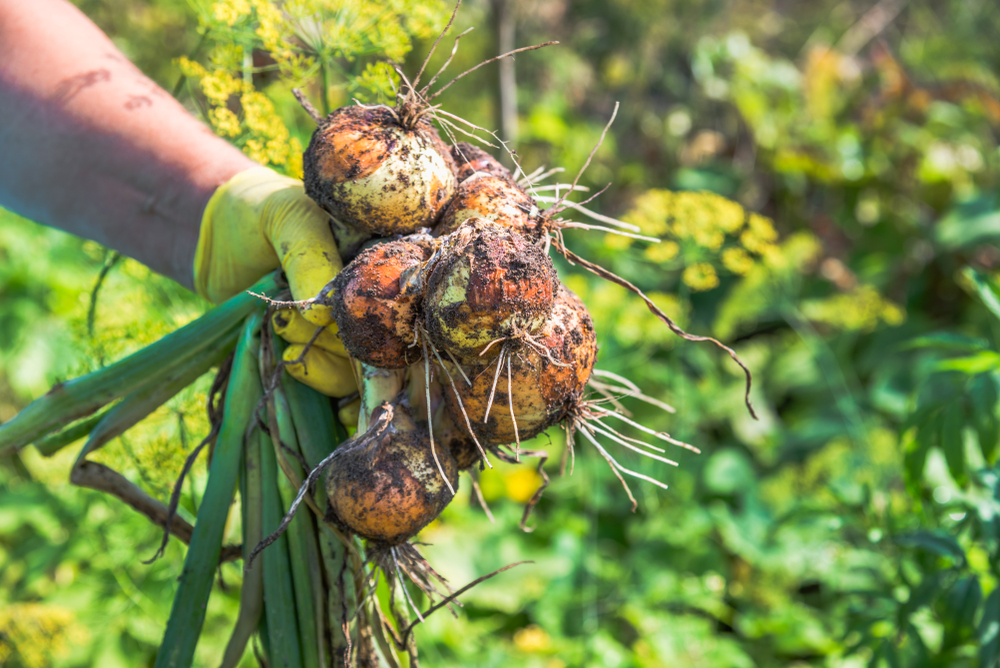
Is that one ripe?
Tin I choice that even so?
How can yous tell if information technology's gear up?
To all of my new gardening friends out in that location, let me put your worries at ease – I notwithstanding ask this question near some veggies.
How can you tell when a vegetable is ready to be harvested?
Information technology's one of those skills we take for granted when we commencement growing vegetables in a garden. Or maybe, yous've been gardening for so long that you don't fifty-fifty recollect about it, that is until y'all effort growing something new, like those fancy cucamelons you keep seeing in the seed catalogs.
After all, we purchase produce in the supermarket all the fourth dimension. We know how to tell if that's good. Well, most of the fourth dimension anyhow.
But when that same vegetable grows in your backyard, and it's still connected to the plant? That's a whole other story.
Days to Harvest
Many seed packets will have a 'days to harvest' range on the packet. A dandy style to approximate when a vegetable is ready for harvest is to record when you planted them in a gardening planner along with their expected days to harvest. Having this information to plow to after in the season tin exist invaluable.
For all the gardeners out in that location, new and former alike, who take stood in their garden scratching their heads wondering if the asparagus is ready or if that eggplant should be left to abound for a few more days, here you get. I've put together this handy-dandy harvesting guide.
1. Asparagus
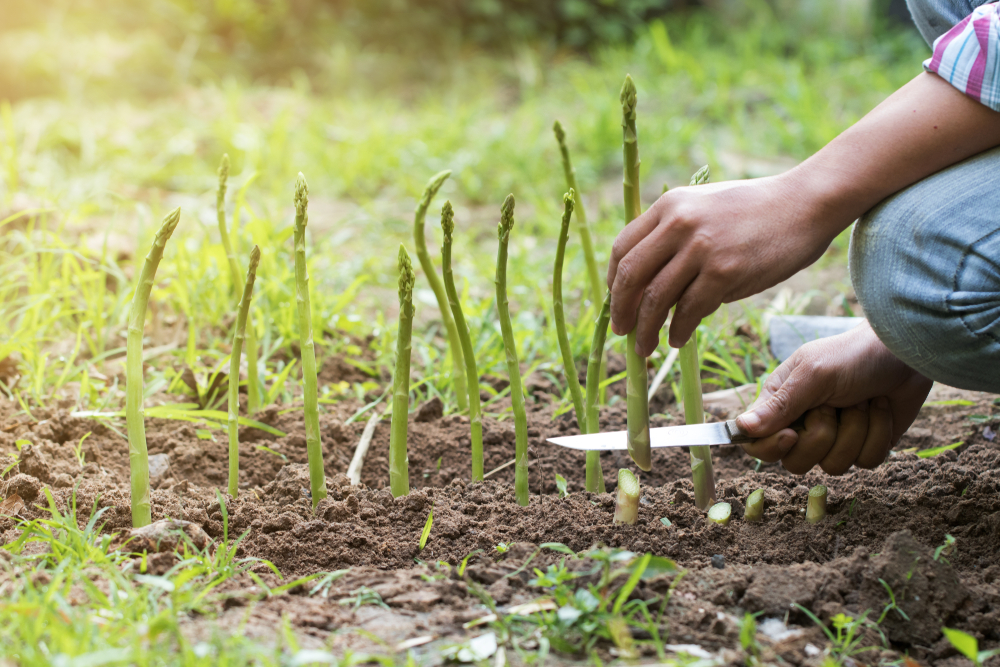
Nothing says leap is here similar asparagus, except for wondering, "When can I option my asparagus?"
Harvest asparagus when the stalks are between 6" to 10" in length; the slenderer they are, the more tender they volition be. You want to harvest before they flower.
two. Beans
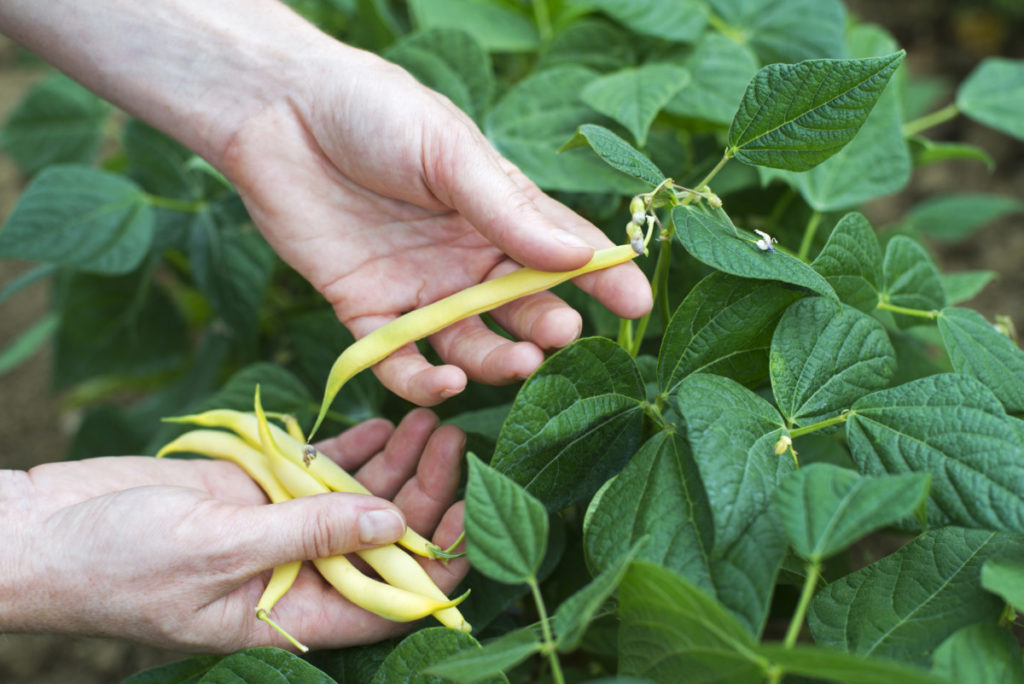
Greenish beans are a wonderfully piece of cake to grow vegetable, and harvesting them is fifty-fifty easier. Pick green beans when they're still young and tender. If the pods are left on the vine for too long, they become tough. Pick the pods when they are the size of a pencil and between 4" – vi" long.
iii. Beets
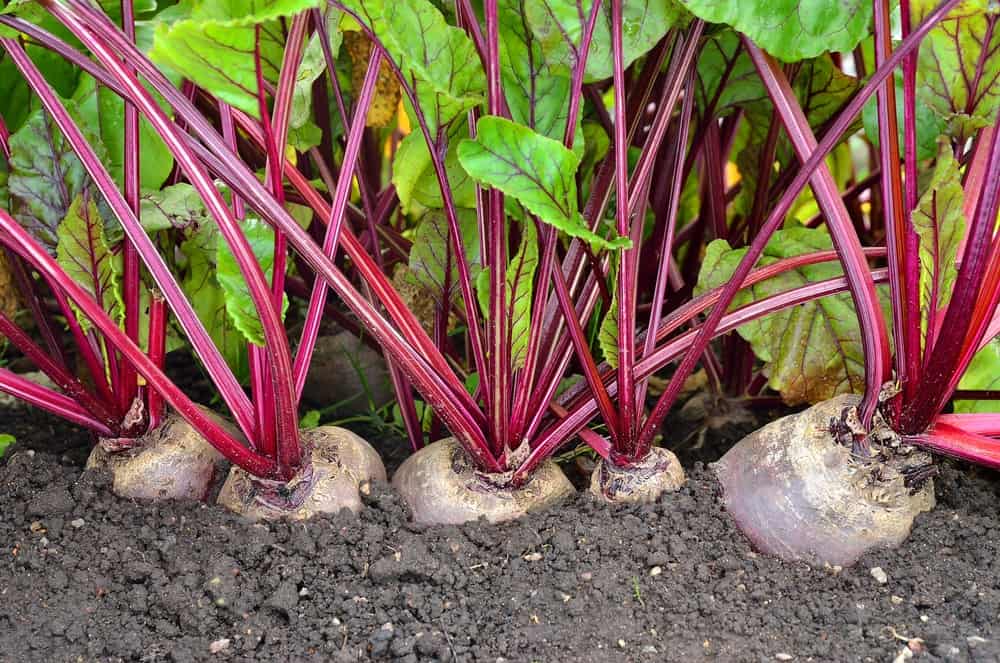
Beets grow fairly chop-chop and will reach maturity a mere month to half-dozen weeks after planting. You can harvest the tops for eating at whatever fourth dimension, just if yous want the beetroot, you'll want to pick them once they accomplish 2" – 3" in diameter above the soil.
4. Bok Choy
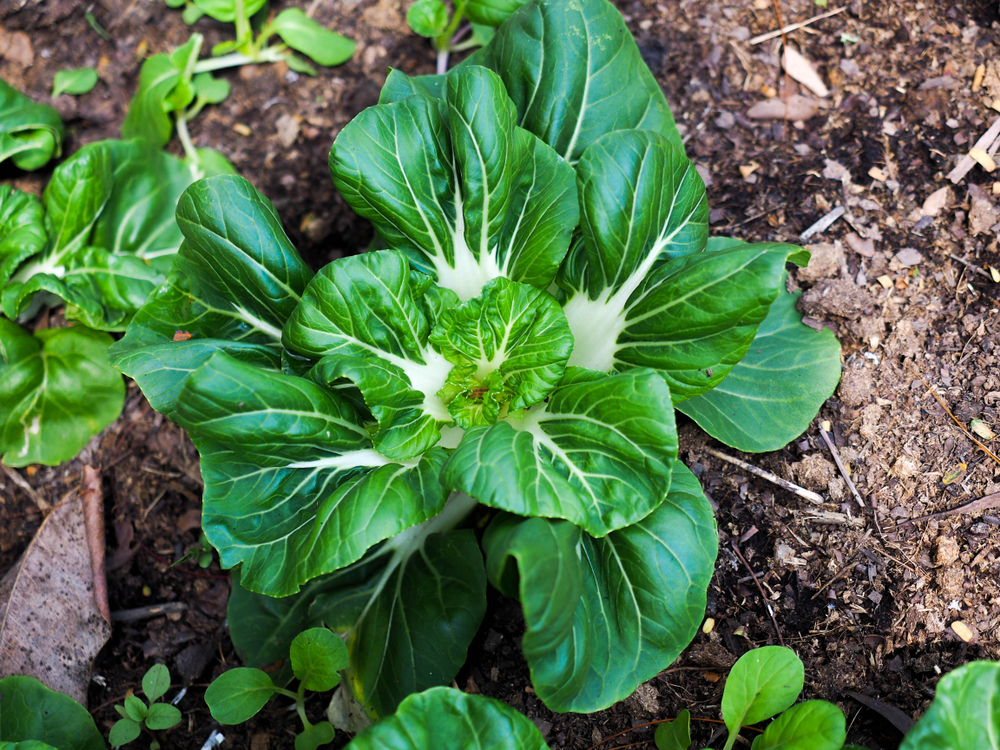
Depending on the variety you've chosen to grow, bok choy will be ready to harvest within a month and a one-half to two months. The stalks will be wide and well developed, and the leaves will be total and create an overall round appearance. Try to selection the heads before they begin to flower.
5. Broccoli
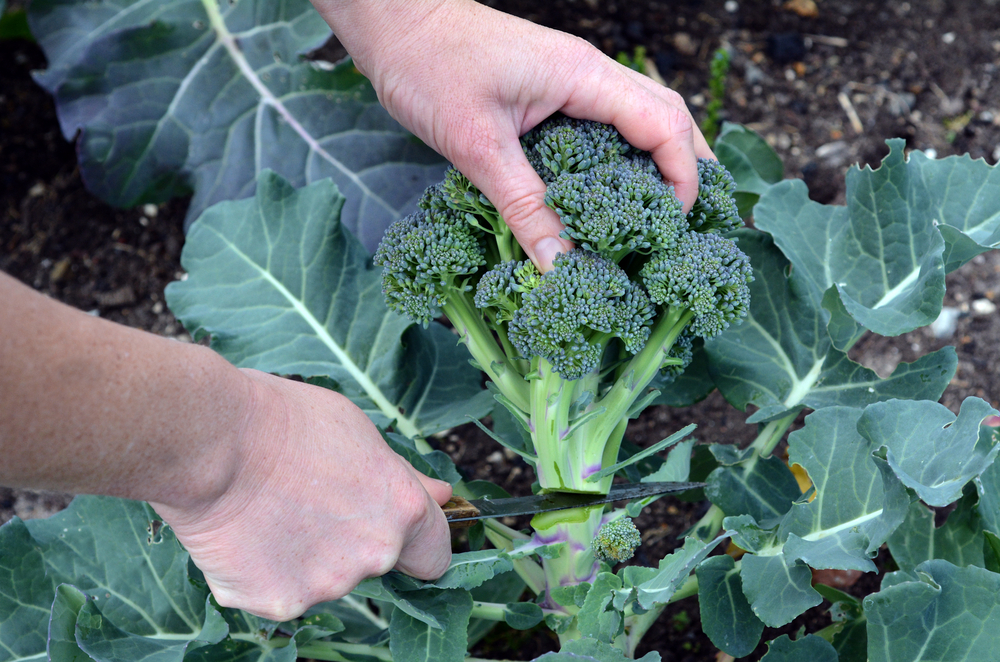
Broccoli is ready to be harvested when the heads are approximately 4" across and the florets are tightly amassed. If the broccoli begins to develop flowers, it'south past its prime.
6. Brussels Sprouts
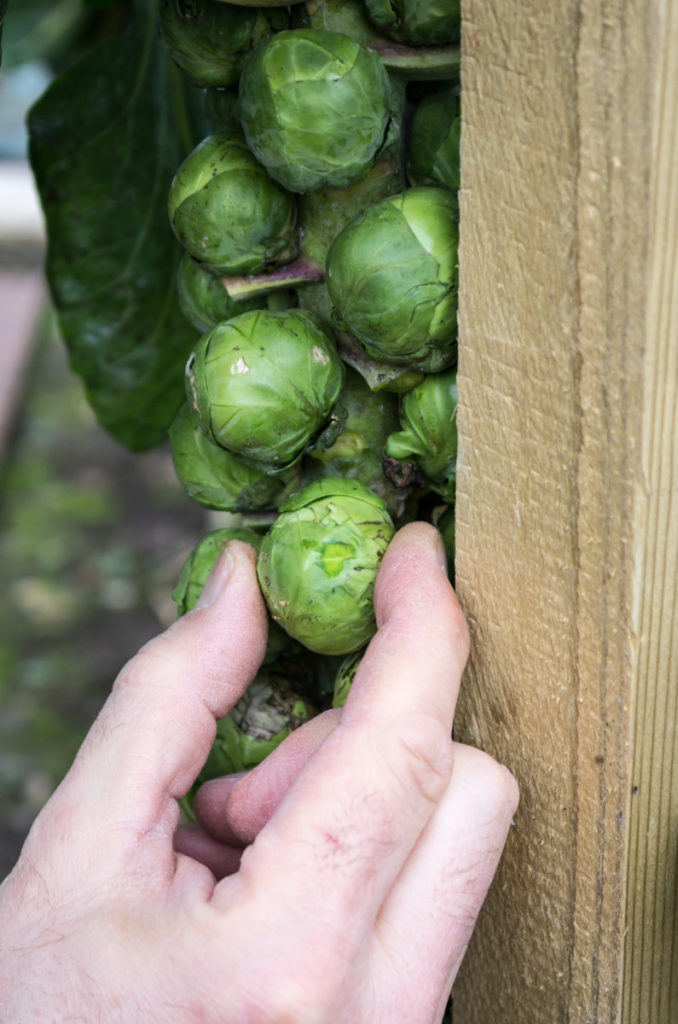
For the all-time season, harvest Brussels sprouts after the first frost in the winter. Similar many cold-weather condition brassicas, a common cold snap will turn the starches within the sprouts into carbohydrate. The heads will be effectually 1" – 2" in diameter. Just twist them off of the stalk.
7. Cabbage
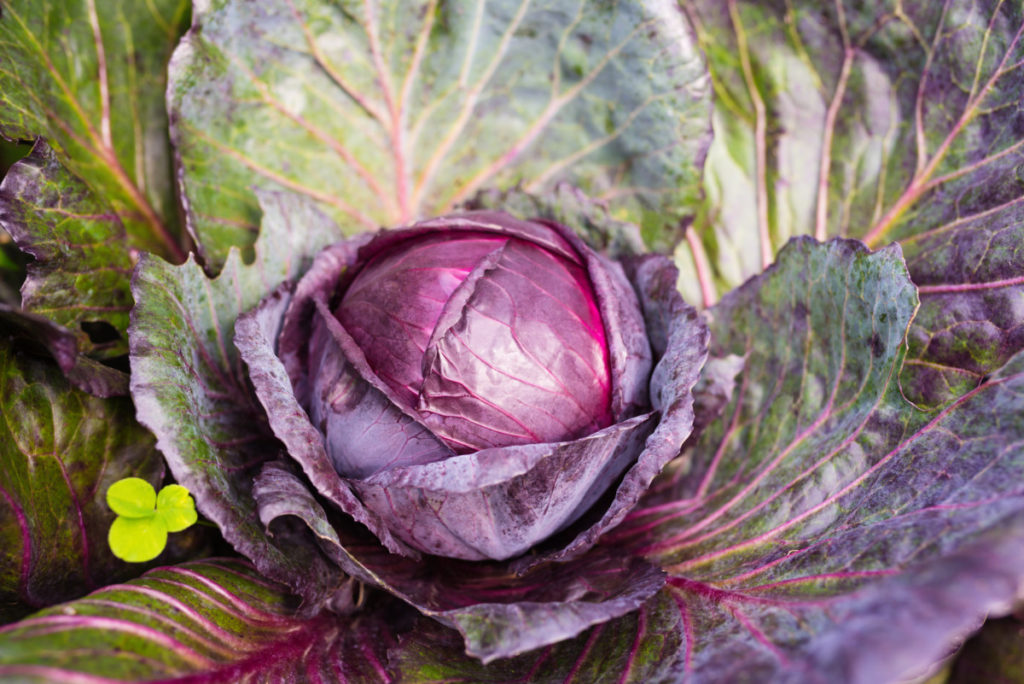
You can tell when cabbage is prepare to be harvested past giving it a little squeeze. A cabbage that is ready to be picked will feel solid all the way through. A cabbage that gives or squeezes a chip still needs a bit more time.
8. Carrots
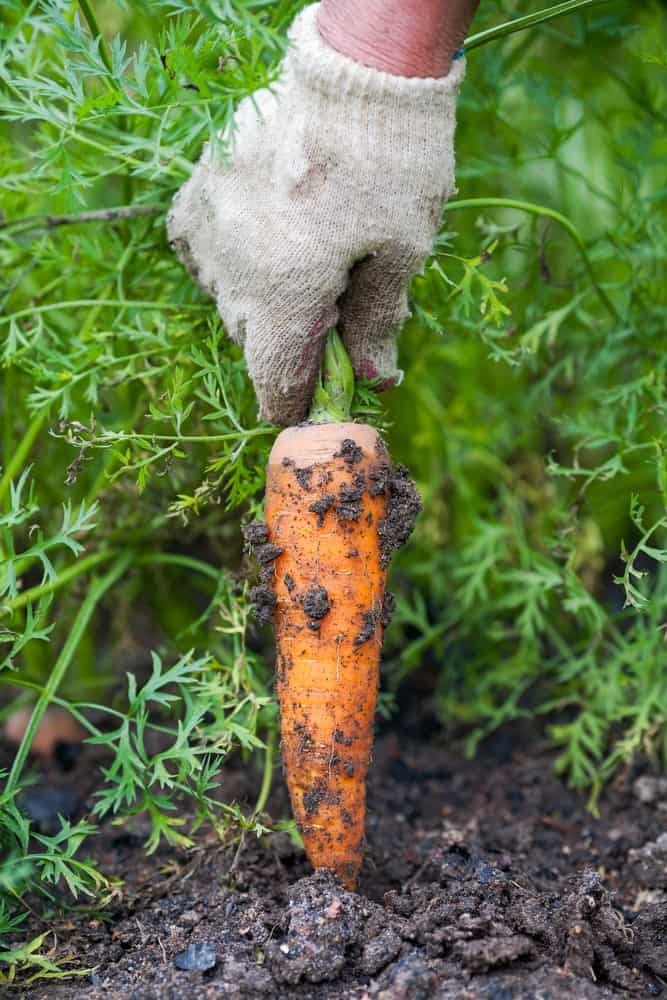
Carrots will mature in around 60-xc days, multifariousness depending. Still, the easiest way to tell when carrots are ready is by checking the tops. As a root vegetable, role of the root will show through the acme of the soil. This exposed portion should be approximately 1" in diameter across.
9. Cauliflower
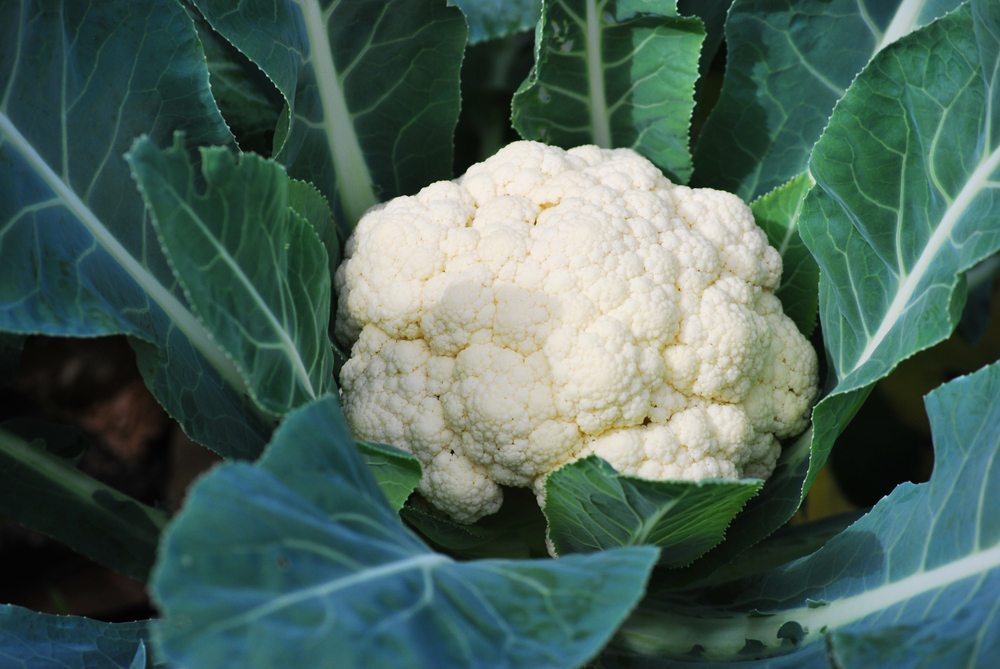
Cauliflower can be catchy. It'southward prepare to harvest when the head is around vi" to eight" in diameter. The florets will be tightly amassed together. A cauliflower that is past its prime number will be rough, and the florets volition showtime to split up. It may also bear witness signs of rot.
x. Corn
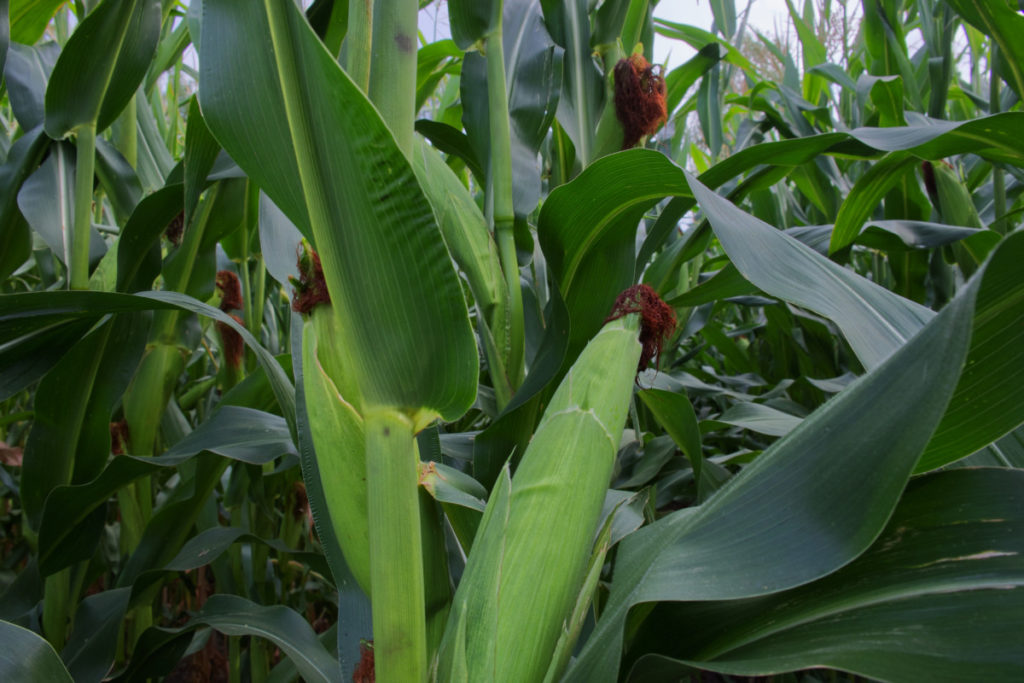
Corn is pretty piece of cake to tell when it's time to harvest. Later on information technology'south tasseled out, merely check the silk. When corn is fix, the silk will get from a glossy white to crunchy and dark-brown. Brownish silk means your corn is ready.
11. Cucamelons
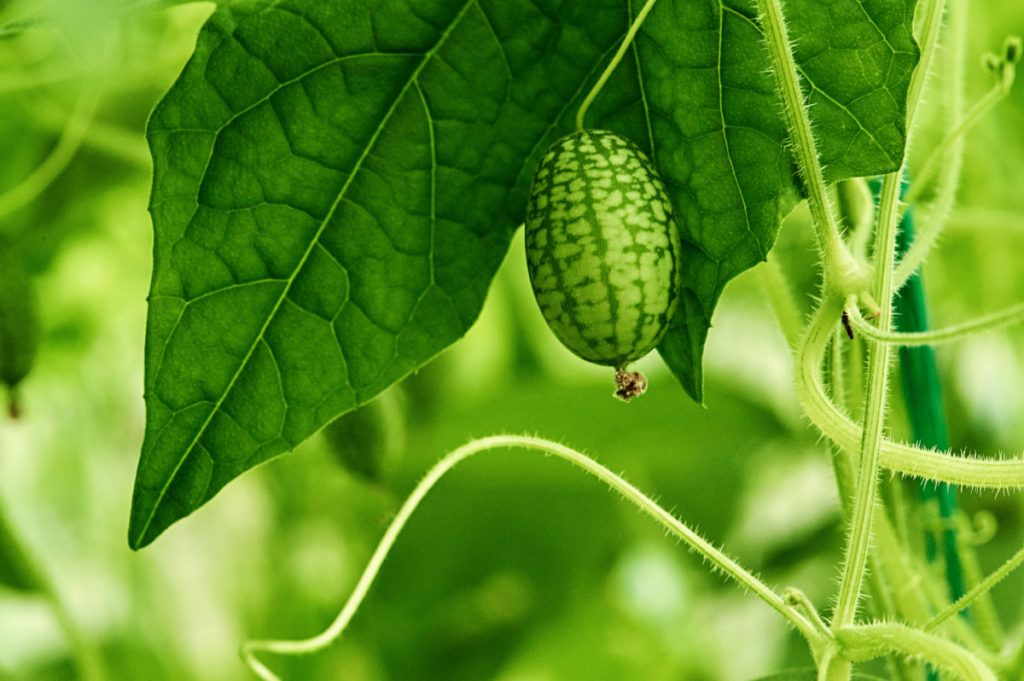
Cucamelons come on rapidly once they begin to flower. These tiny little mouse melons are ready to be picked when the fruit is roughly an inch in size. Give them a piffling squeeze, and they should be firm, too.
12. Cucumber
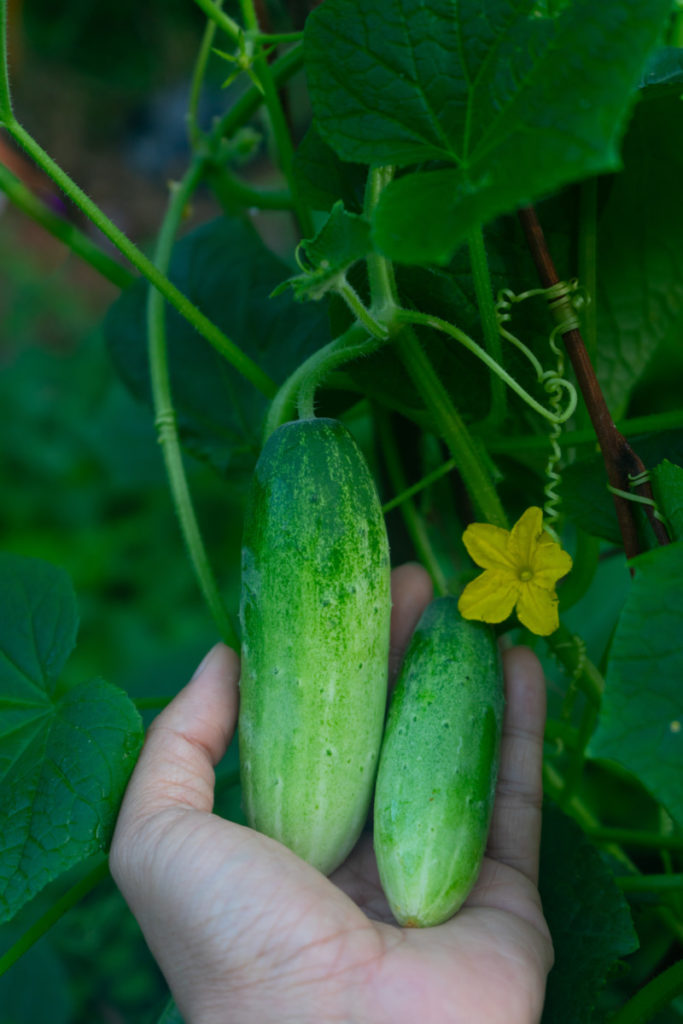
Cucumbers can become bitter and seedy if left on the vine besides long. Hmmm, kind of like some people I know. Harvest your cucumbers when they're between half-dozen" to 8" long for the best flavor and to avoid large, tough seeds.
thirteen. Eggplant
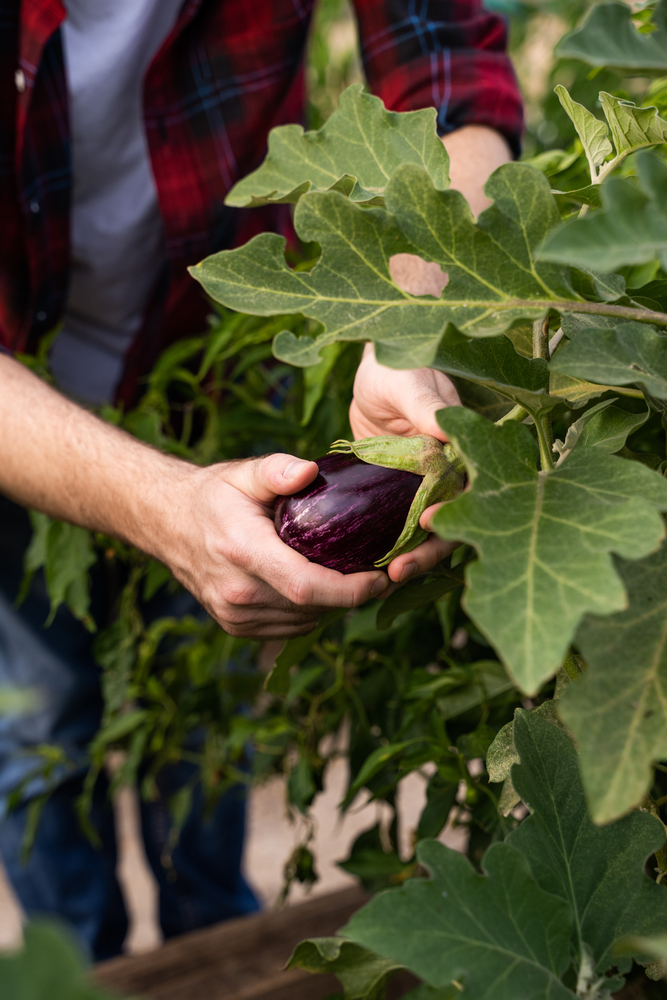
Eggplant tin be catchy to know when it'due south fix to be picked. There are two tell-tale signs information technology's prepare to exist harvested, though. The first is by the gloss. Ripe eggplants have a glossiness to them when they're ripe.
The 2d way to exam an eggplant is by way of the fingerprint test. Press your finger gently into the flesh of the eggplant. If information technology bounces immediately dorsum, the eggplant is even so unripe. If a slight indentation is left for a moment before fading, the eggplant is ready to exist picked.
xiv. Garlic
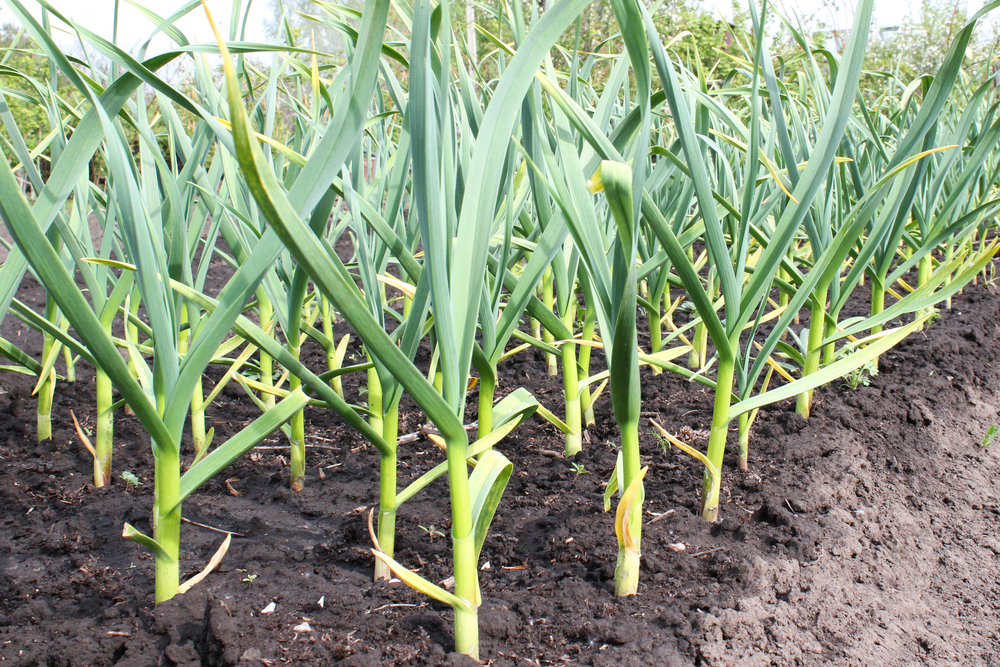
Garlic tin be harvested when roughly half of the above-ground leaves have died off. And if yous abound hardneck garlic, yous'll be clued in by the development of scapes. Once yous clip your garlic scapes, the garlic will be ready to harvest in well-nigh a month.
xv. Ground Cherries
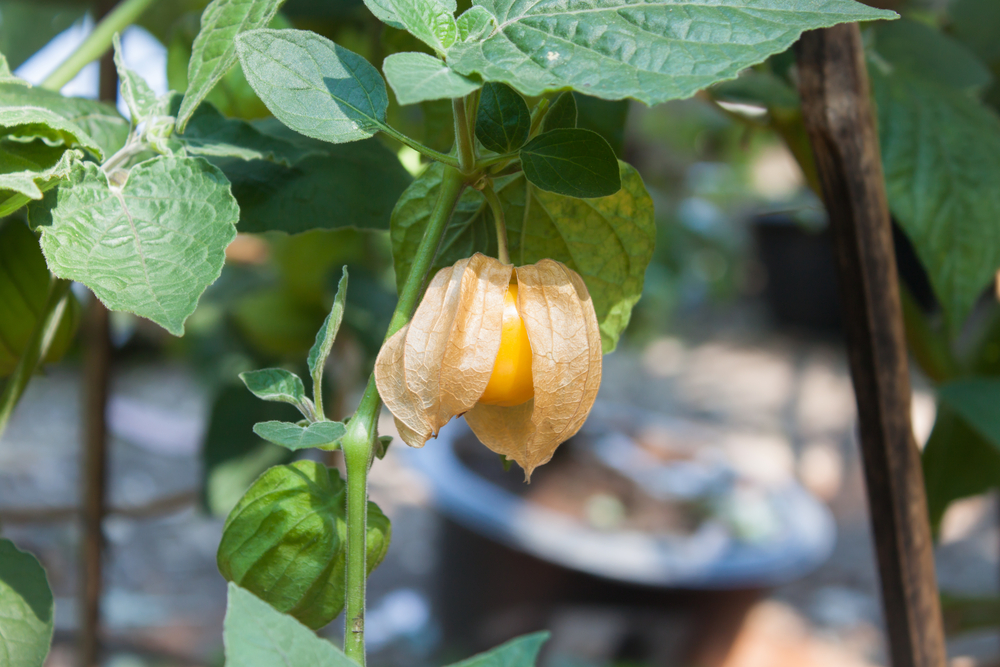
Basis cherries are ripe when their outer papery husk turns a straw-colored yellow. Some will ripen on the vine, while others volition fall from the establish when they're ready to harvest, hence their proper name. The actual berry inside the husk is a gold xanthous when they are ripe.
16. Kale
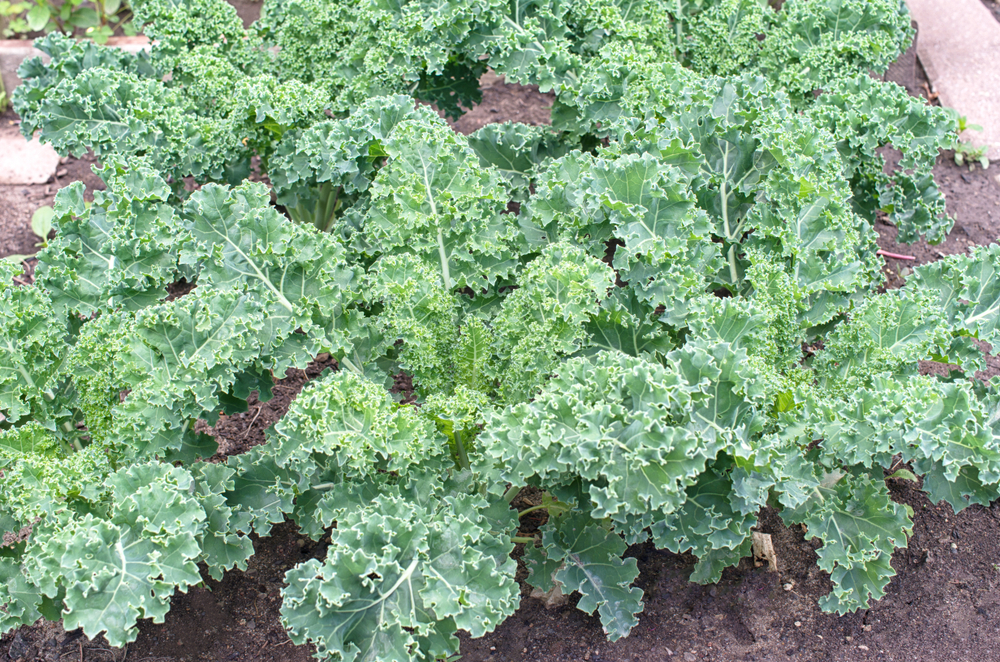
You can choice kale leaves as before long equally they become the size of your manus. You'll desire to pick the oldest and largest outer leaves commencement. Brand sure you compost any yellowed or scraggly-looking ones. As y'all harvest, more than leaves will grow from the inside out of your kale constitute.
17. Leeks
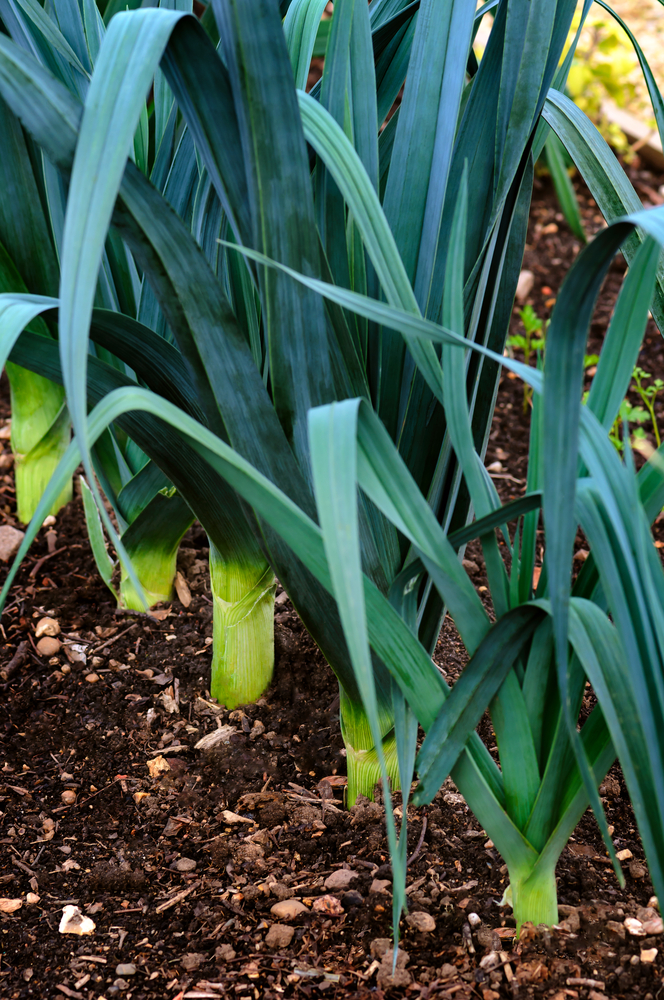
Leeks are another long-haul veggie. Most varieties accept more than 100 days to mature. Leeks are ready when they reach 1" to ii" in bore.
18. Lettuce
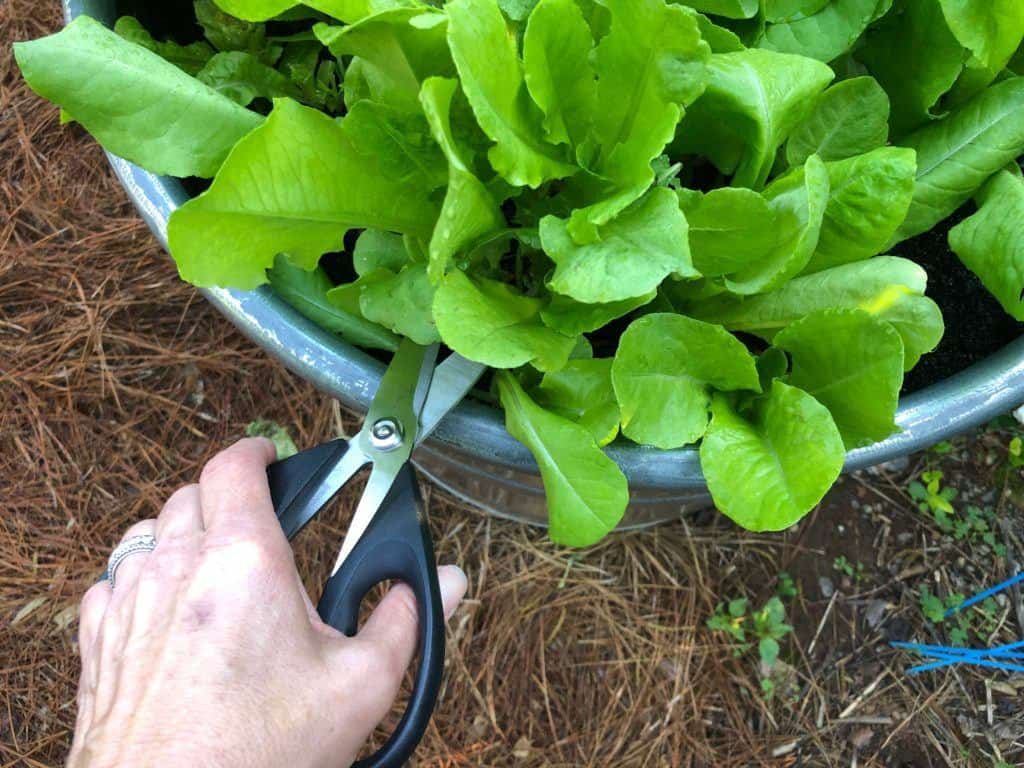
Most cut and come again lettuce can exist harvested when the leaves are around iv" long. Equally the name implies, when you cut the lettuce, it will abound more leaves once again.
For head lettuces such as romaine or light-green ice, expect until a recognizable lettuce caput is formed earlier picking.
You should cease picking lettuce once the leaves become bitter and information technology starts growing into a long stem.
19. Onions
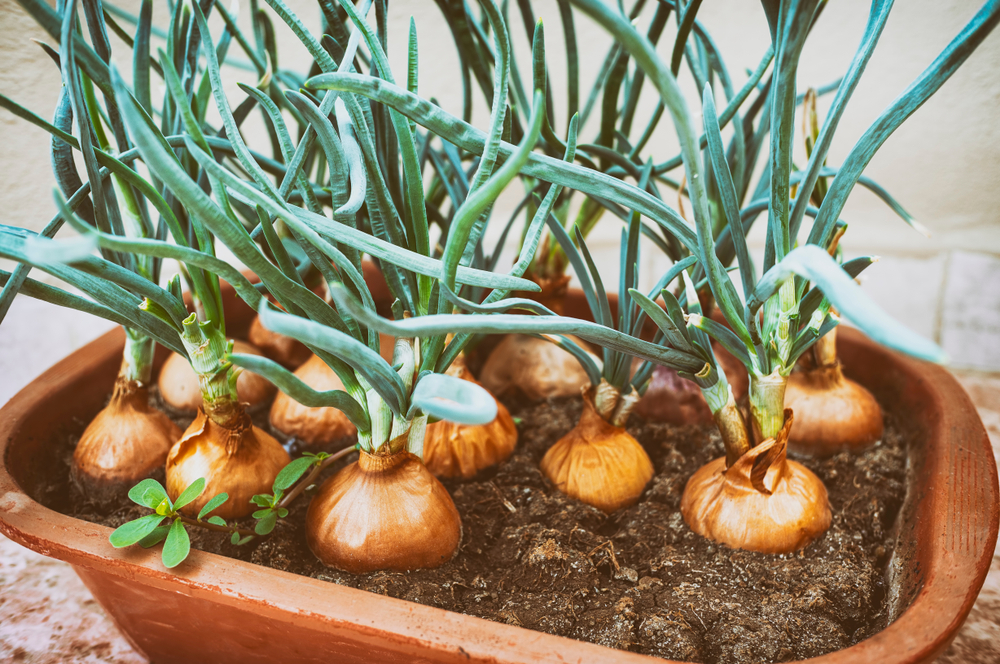
Onions are a vegetable whose harvest engagement is all about personal preference. Basically, yous only dig them up when they accomplish the size you want. Another indicator that onions are prepare is when the green tops of their leaves begin to turn yellow and fall over.
20. Peas
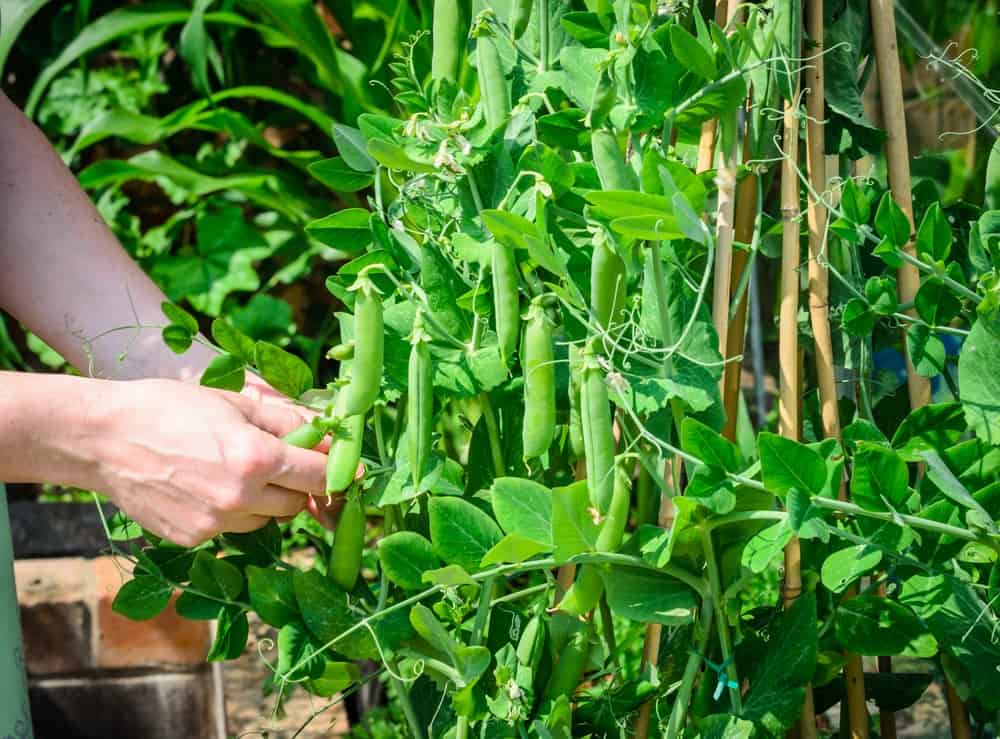
Keep an heart on the flowers to know when peas are ready. Most peas volition be set up roughly three weeks after you first to see flowers.
For snowfall peas, harvest the pods while they're still relatively flat, but once they reach 2"-4" inches long. For sugar snap peas, you'll as well want to harvest them when the pods accomplish effectually 2"-4" long and while the peas inside are all the same relatively pocket-sized. For shelling peas, harvest those when they are plump and house, and you tin feel the big peas inside.
21. Peppers, Hot
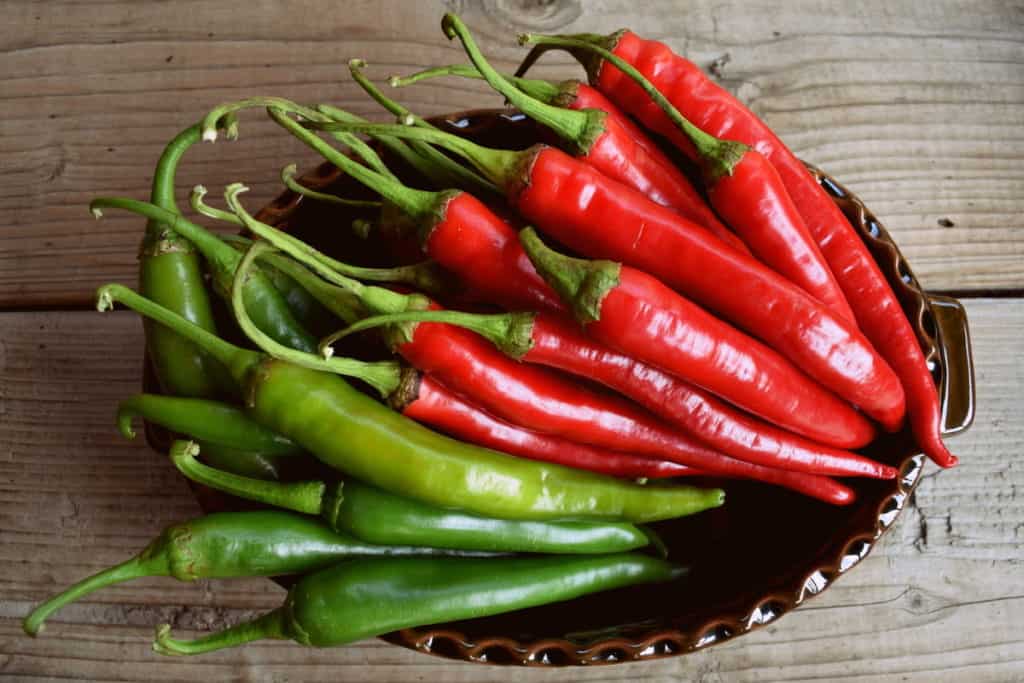
Many hot peppers plough red when they reach maturation. All the same, a few varieties, such equally jalapeno and poblano, stay green. For jalapeno peppers, they volition be prepare to harvest when they reach 3" long. For poblanos, they will become deep, sleeky green and volition be around 4"-6" long when they're ready to be picked.
22. Peppers, Sweetness
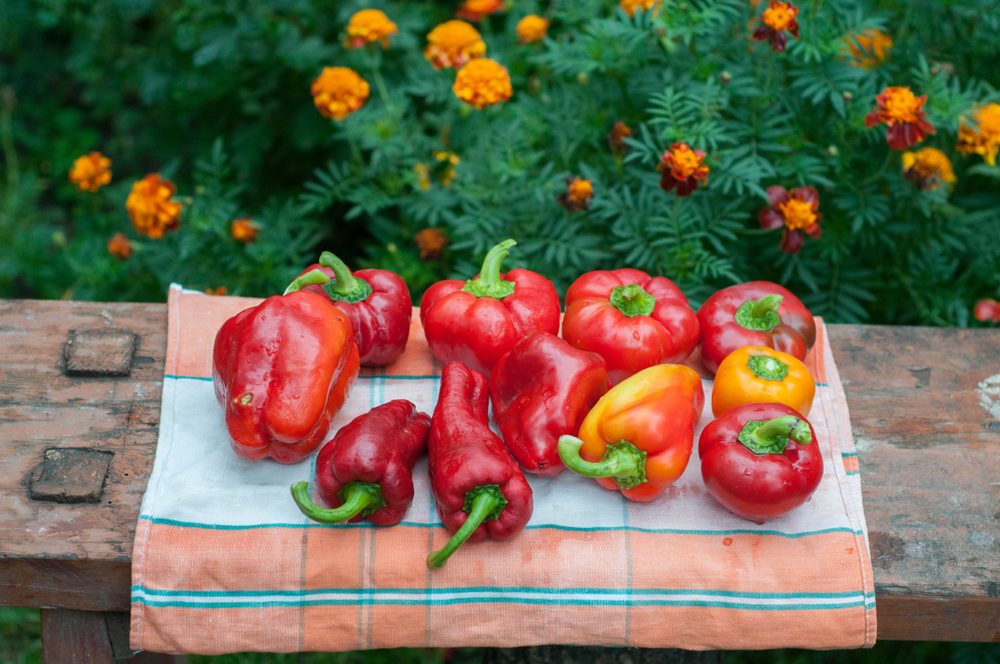
Sweet peppers are pretty like shooting fish in a barrel to estimate when they're fix to option, too, as nigh of them modify from light-green to a specific color when they are ripe. Light-green bong peppers can be a bit trickier; they should exist business firm and big, 3-v inches in diameter.
23. Potatoes
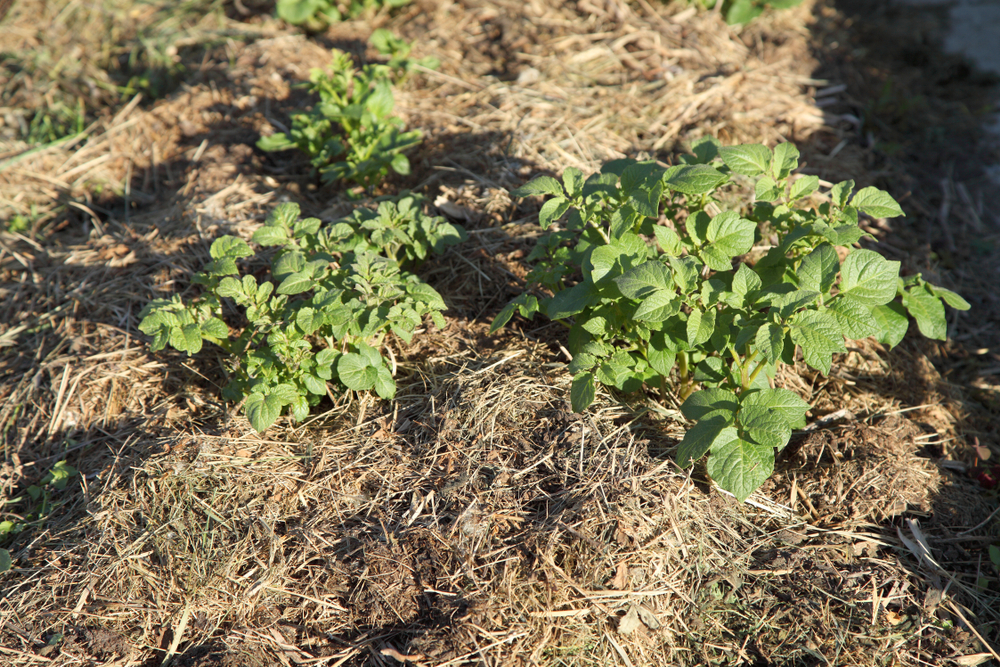
Potatoes can be a tough vegetable to know when information technology's time to pick every bit they abound entirely underground. Lucky for us, nature gave us some pretty good clues every bit to when it'southward fourth dimension to unearth your tubers.
If y'all want modest, "new" potatoes, wait until you see flowers on your plants; this happens around the 60-ninety twenty-four hour period mark, depending on the variety yous're growing.
A bit of patience is needed for larger spuds with thicker skins that volition terminal through the wintertime. The flowers and vines growing above ground will begin to wither and die off. When the tops of the potato plants have completely died off, your potatoes are ready to dig.
Don't forget – don't castor off too much dirt from your potatoes, and allow them cure for several days someplace absurd. Here'southward our guide to curing and storing potatoes for the long booty.
24. Radishes
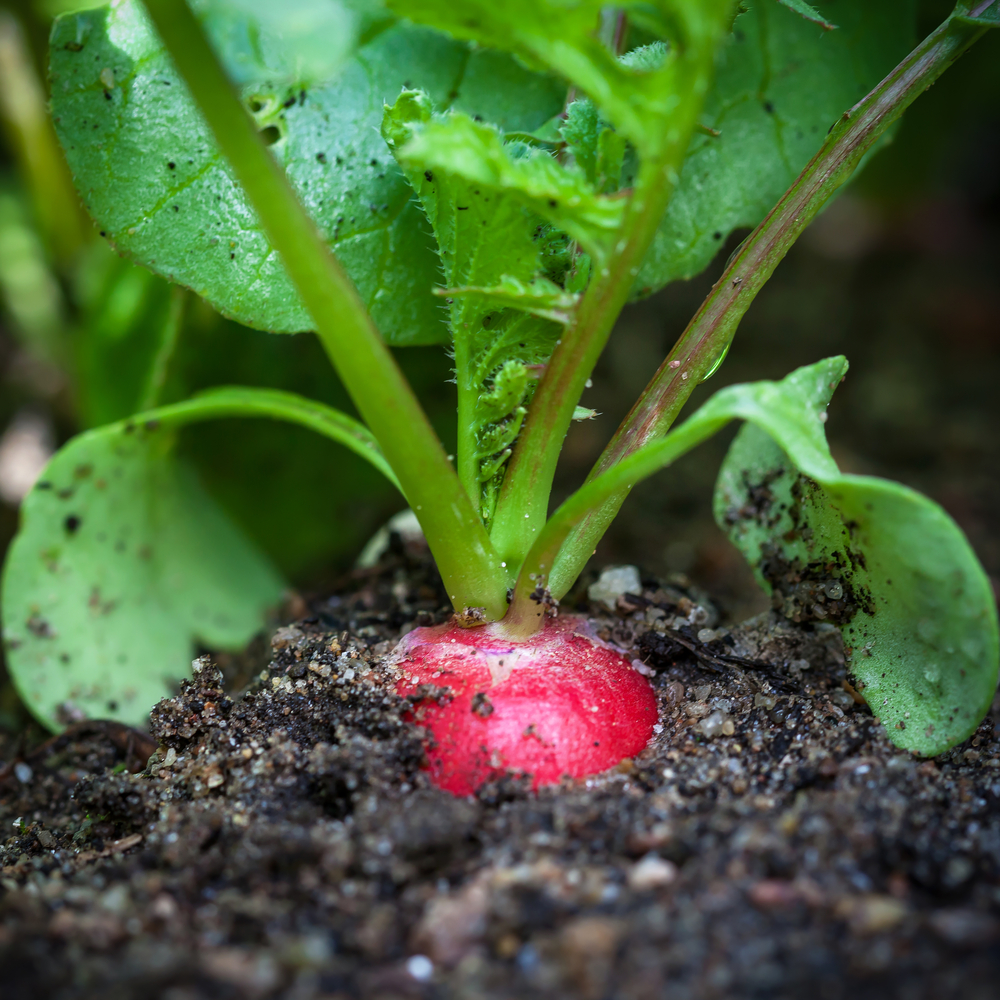
Radishes are the instant gratification of the vegetable earth. Most varieties mature in as little as 25 days. Some types, such every bit watermelon radishes, can take up to 100 days, merely for the most part, you can pick radishes pretty chop-chop after planting them.
A skilful rule of thumb is to selection radishes when the tops of the roots are nigh 1" in diameter above the soil surface.
25. Spinach
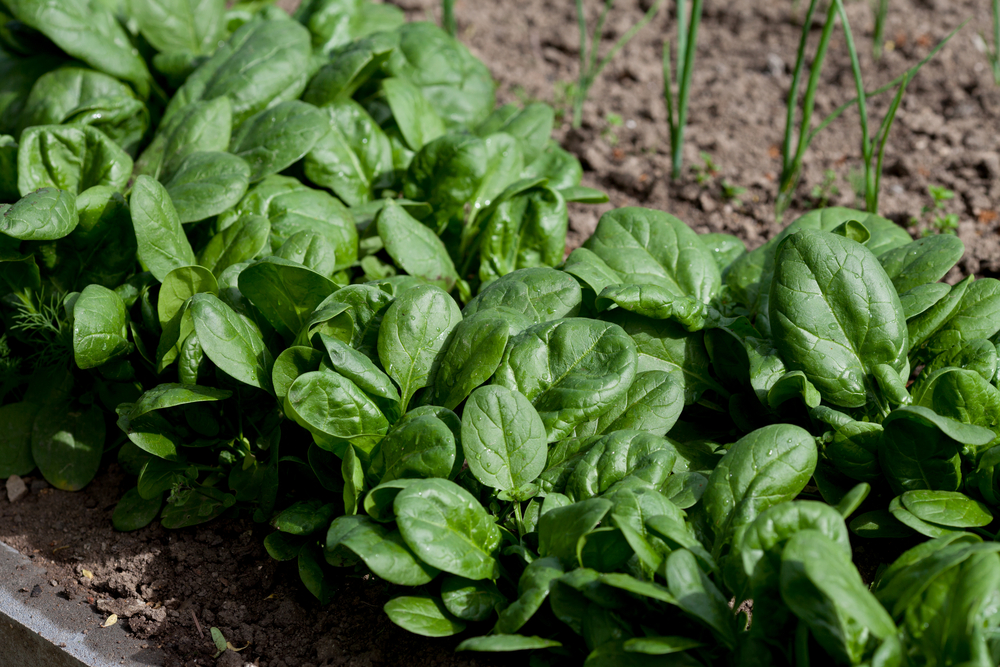
Spinach is a cool-atmospheric condition crop and takes between thirty to l days to mature, depending on the diversity. Pick spinach leaves when they're about half dozen" long. If you prefer "infant spinach," pick the leaves when they're around iii" long.
As the weather gets hotter, your spinach will commencement to get leggy. Go ahead and pull it upward at this stage for the last harvest of leaves. And don't forget to plant more in the autumn!
26. Squash, Summertime
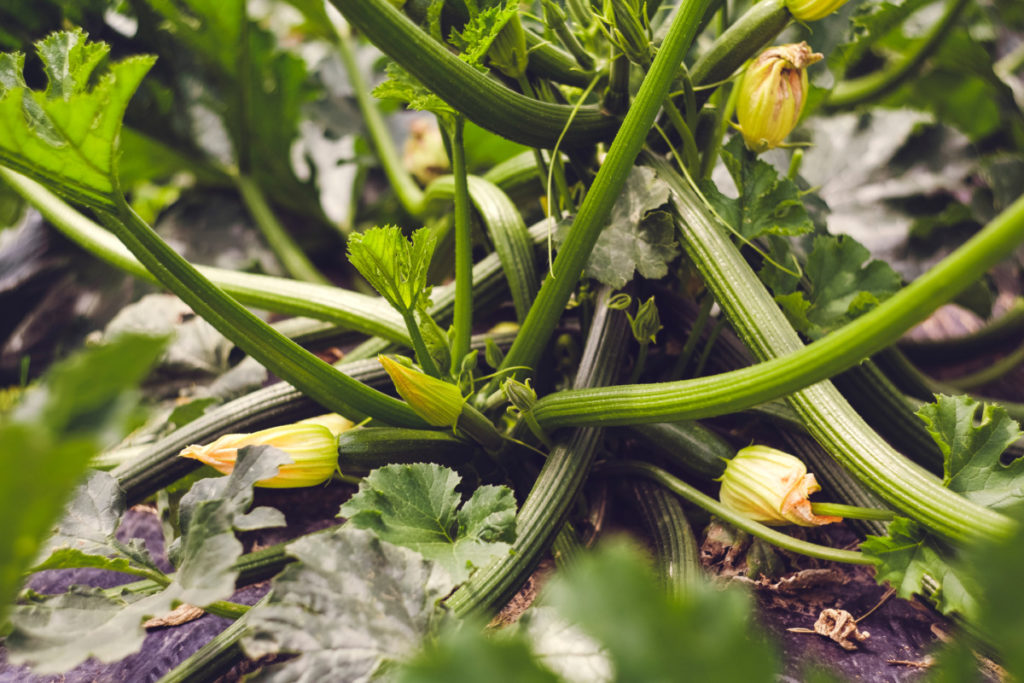
Summer squash like zucchini and yellow straight neck come down to personal preference. You can selection them when they're only a few inches long for an extremely tender and bite-sized squash.
Or you tin can permit them grow larger, from 6" to 10" long. However, the larger summer squash grows, the tougher the outer skin becomes and the more than seeds they develop inside. The seeds can often be tough to eat and may need to be removed before you melt the squash.
27. Squash, Winter
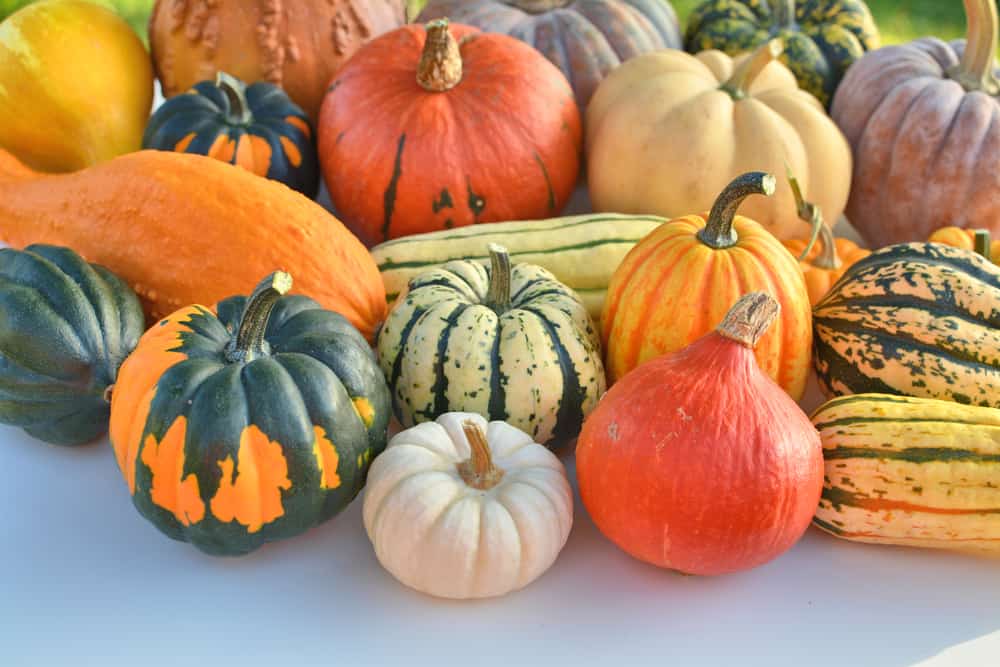
For winter squash, you'll need to pay attention to the colour and the rind. The squash should be a solid colour one time it's finished growing, for instance, pumpkins turning green to orange. And the rind of the squash should be thick and hard. A good rap on the side of your squash will yield a slightly hollow sound.
Selection your squash by cutting them from the vine, being sure to get out a couple of inches of the stem fastened.
28. Swiss Chard
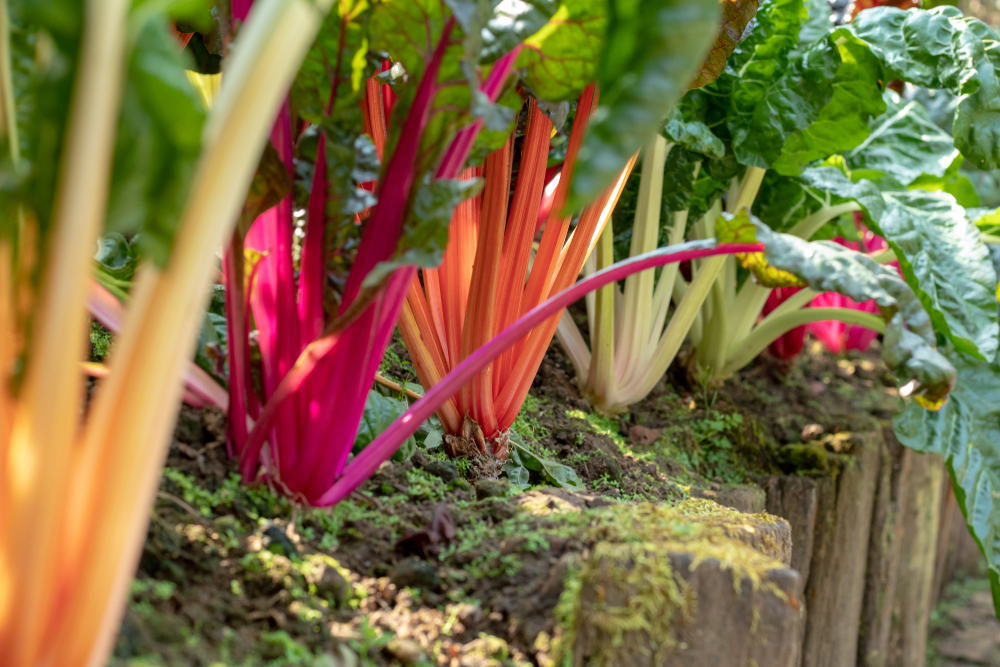
Swiss chard is all about personal preference. If you want smaller tender stalks, you can harvest Swiss chard around xxx days after planting. The stalks volition be no bigger than your pinky finger, and the leaves will exist roughly the size of your paw.
If y'all want larger Swiss chard, await another month and harvest when the stalks are as big as celery stalks.
29. Tomatoes
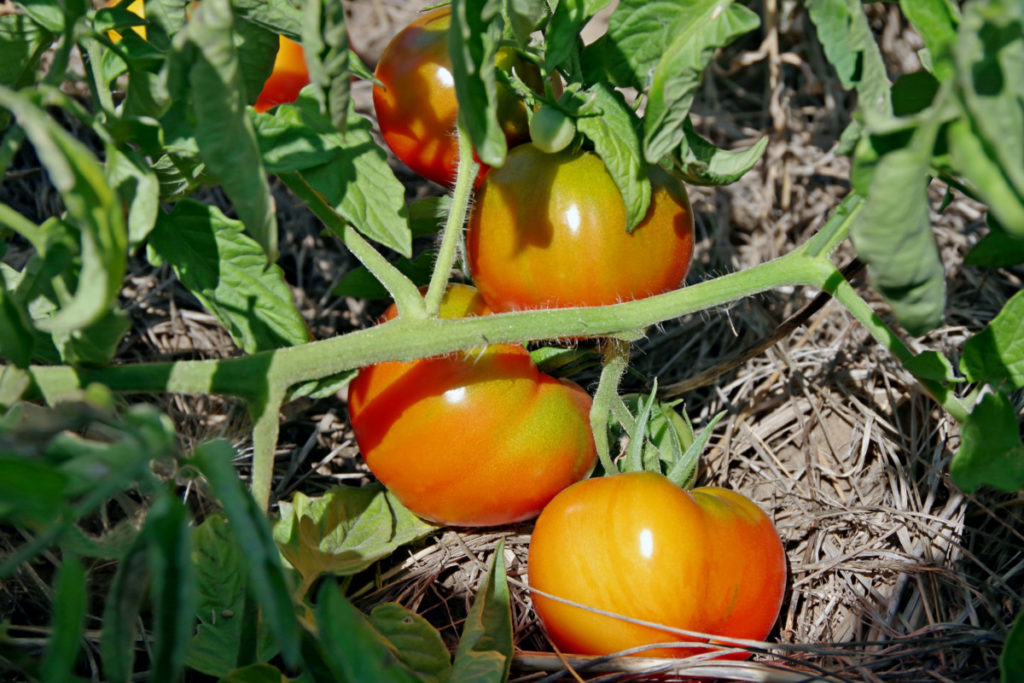
Tomatoes are pretty cool in that you can pick them from the vine, and they volition go along ripening. The appropriate time to option them is known every bit "the breaker stage." At this point, the lycopersicon esculentum has everything information technology needs to go on to ripen, and it volition create a small-scale bulwark of cells in the stem, substantially walling it off from the rest of the found.
The breaker stage is identified by the establish being one-half and half in color. Half dark-green and one-half the colour it will exist when it'southward finished ripening. So, for traditional tomato varieties, half green and one-half cherry-red, an about pinkish colour.
Choice tomatoes at the breaker stage and place them somewhere warm to finish ripening.
30. Turnips
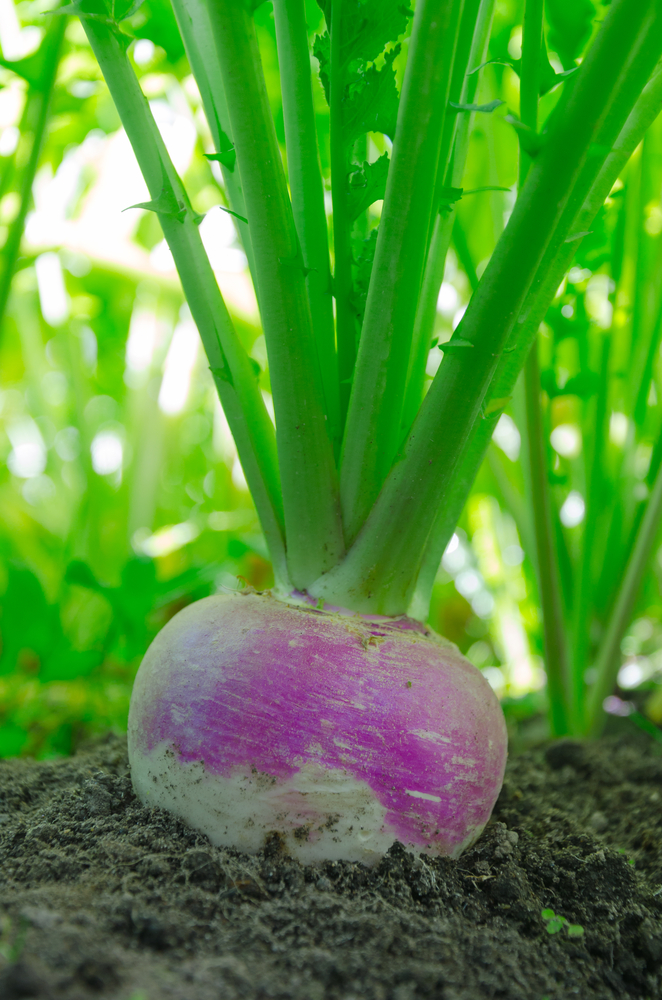
Turnips vary wildly in how long information technology takes them to reach their maturation date. A general rule of thumb can be applied, though; smaller turnips which are used in salads and for eating raw should be harvested when they are around ii" in diameter at the soil surface, and larger turnips used for roasting or stews should be harvested when they are iii" in diameter at the soil surface.
Turnips need to be harvested before a difficult frost, though, as they will not survive the cold.
Ta-dah! Now you know when to harvest all of your carefully tended vegetables. Bookmark this article, so it's easy to refer to throughout the growing season.
Hey there, Rural Sprout reader, my name is Tracey, and I'm so glad y'all popped over to my bio. Originally from upstate NY, I'1000 now an honorary Pennsylvanian, having lived here for the by 12 years.
I grew up spending weekends on my dad'due south off-the-grid homestead.
He congenital our rough-hewn log cabin when I was seven years quondam, and I spent much of my childhood roaming the woods and getting my hands dirty.
I learned how to do things most piddling kids oasis't washed in over a century.
Nosotros were always decorated. Whether it was pressing apples for homemade cider or trudging through the early spring snows of upstate NY to tap trees for maple syrup, there were always chores with each new season.
I learned how to preserve what nosotros grew in our garden.
And dad was organic, long earlier it became the pop buzzword that it is today.
As an developed living in the mod earth, I go on to draw on the skills I learned as a kid. I love my Wi-Fi, and knowing pizza is merely a telephone call away. Only I'm okay with never revisiting the adventure that is using an outhouse in the heart of January.
And so, these days I consider myself to be well-nigh a homesteader.
I take an eclectic approach to homesteading, utilizing modern convenience where I want, and choosing the rustic ways of my childhood simply considering they bring me joy.
I'm a firm believer in self-sufficiency, no matter where you alive, and the power and pride that comes from doing something for yourself.
I garden, even when the only space available is the rooftop of my apartment. I've been a knitter since historic period seven, and I spin and dye my own wool besides. And if you can ferment it, information technology'south probably in my pantry or on my kitchen counter. I can't become more than a few days without a trip deep into the Pennsylvania Land Game Lands looking for mushrooms, edible plants, or the sound of the wind in the trees.
My gift of gab and sense of humor via the written word keeps me busy as a copywriter and freelance blogger.
If you demand copy that grabs your readers by the eyeballs and keeps them glued to your page, and so I'yard your gal. You can discover me at BesemerWrites.
Follow all of my crazy homesteading adventures on Virtually a Homesteader and Instagram @traceyleezle
Peace, dear, and dirt under your nails,
Tracey
Source: https://www.ruralsprout.com/vegetable-harvest-guide/
0 Response to "How Do You Know When Corn Is Ready to Harvest"
Post a Comment